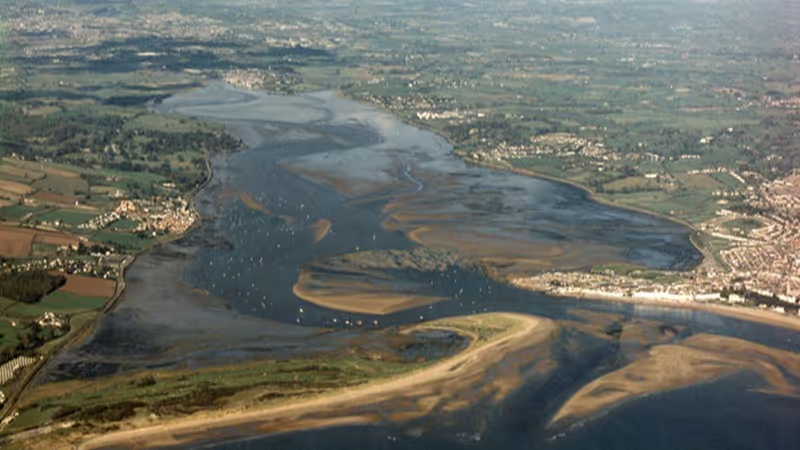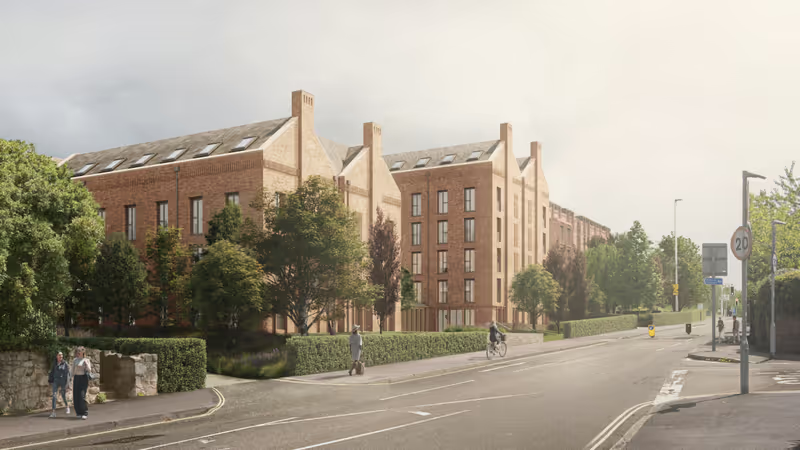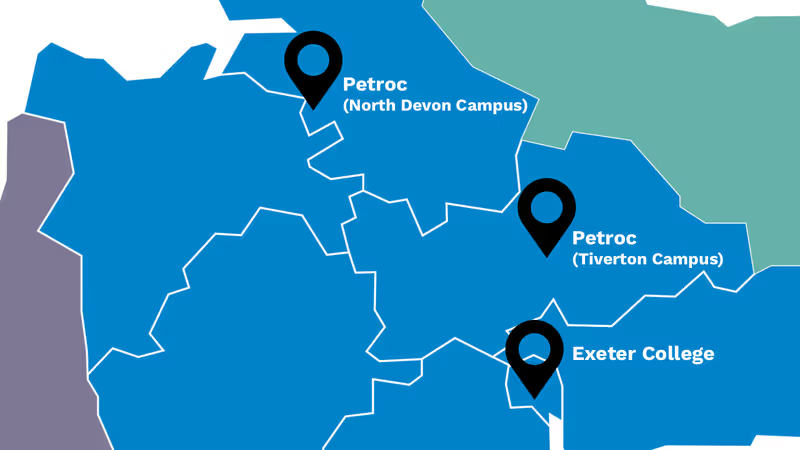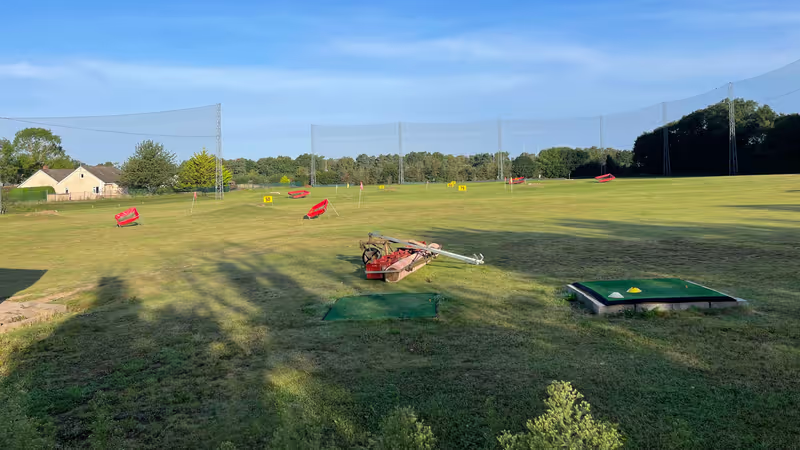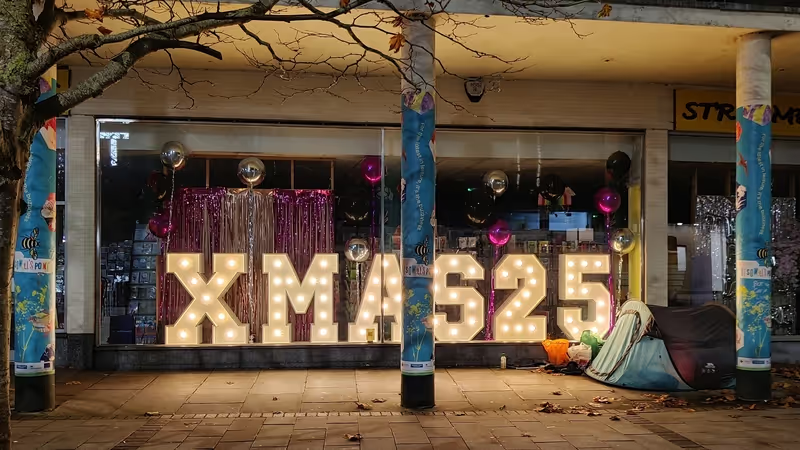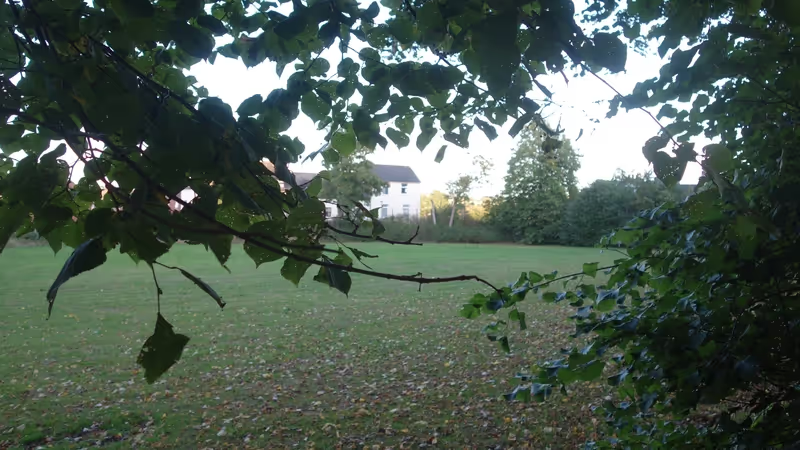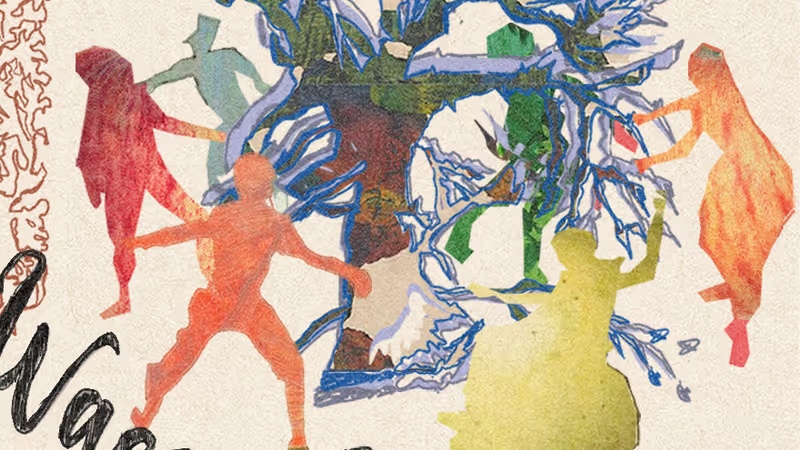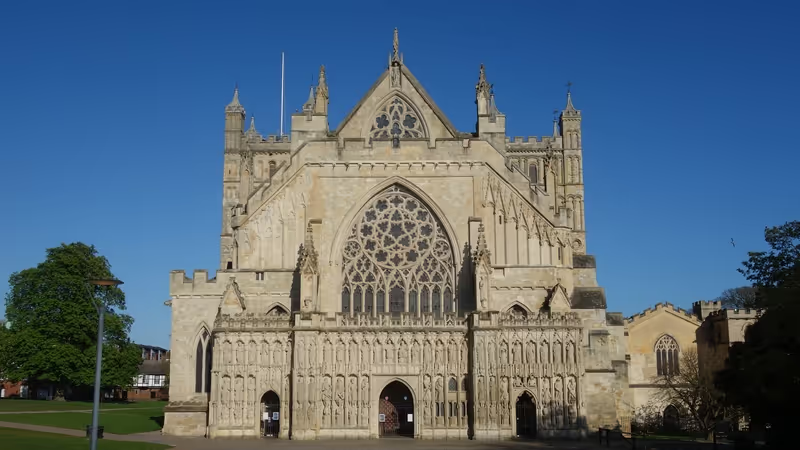The demolition of dozens of buildings on the University of Exeter’s Streatham campus is to proceed to enable intrusive unexploded ordnance surveys after a risk assessment concluded that World War II munitions might remain hidden on its West Park redevelopment site.
The university plans to provide more than 2,000 new student bedspaces in blocks up to nine storeys tall by replacing the existing Clydesdale, Nash and Birks Grange Village accommodation facilities in the north west corner of the campus between Cowley Bridge Road and Streatham Drive.
The fifteen acre 50,000m2 redevelopment will be two-thirds as large again as the university’s East Park development on the other side of the campus and more than ten times the size of St Sidwell’s Point leisure centre.
It’s nearly five years since the university applied for outline planning consent for the controversial redevelopment, which was widely opposed by residents. Exeter City Council’s subsequent approval included permission to demolish of a total of 30 buildings on the site.
The council then approved a remaining reserved matters application in June 2023 after a fractious planning committee meeting which relied on chair Paul Knott casting his vote in its favour to cries of “shame” from the public gallery.
 University of Exeter West Park redevelopment phasing plan. Source: Exeter City Council.
University of Exeter West Park redevelopment phasing plan. Source: Exeter City Council.
West Park redevelopment did not commence that summer, as expected. Then in May last year the council gave the university permission to alter its plans by dividing them into three delivery phases.
The first phase, the redevelopment of Clydesdale and most of Nash Grove, was to begin last summer and take three years to complete. The reconfiguration and refurbishment of Birks Grange Village, phase two, was to begin at the same time and take two years.
The third phase, the redevelopment of the rest of Nash Grove and the relocation of the university estate service centre to a new 3.5 acre site on the north side of the campus near Belvidere Meadows nature reserve – and its replacement with student accommodation – was to take place at an unspecified future date “subject to viability”.
But works did not commence last summer either. Then, last month, the council gave the university permission to alter its plans again, this time scaling back the Birks Grange Village reconfiguration and refurbishment.
A fortnight later, agents for university West Park development partner UPP applied to the city council for permission to separate the demolition from the rest of the planning consent “so that the demolition works do not trigger the commencement of the wider West Park development”.
The council approved the application two weeks ago, on the basis that the development site “would remain hoarded off after demolition if for any reason redevelopment does not proceed”.
 University of Exeter West Park redevelopment demolition site plan. Source: Exeter City Council.
University of Exeter West Park redevelopment demolition site plan. Source: Exeter City Council.
The initial consent for the redevelopment included several unremarkable conditions that must be met before works commence. One, however, was rather less routine, requiring an investigation to “determine the risk posed by unexploded ordinances” in the interests of public safety.
Until the results of this investigation and any further works they might require have been approved by the council, and any such works completed and a completion report approved in turn, West Park redevelopment works cannot begin.
The imposition of this condition followed the discovery of an unexploded 1,100kg World War II bomb three months earlier, on land beside Birks Grange Village that was being prepared for the construction of several student accommodation blocks.
Royal Navy bomb disposal initially erected a 100-metre cordon around the site, then extended it to 400 metres overnight as 2,600 nearby properties were evacuated. 400 tonnes of sand were used to create a walled mitigation enclosure before the bomb was detonated the following evening.
The explosion blew debris across a 250 metre radius and caused structural damage to nearby buildings, including university halls of residence. It was heard five miles away.
 Detonation of 1,100kg unexploded bomb discovered during student accommodation development works in February 2021. Source: Brimstone Site Investigation UXO risk assessment.
Detonation of 1,100kg unexploded bomb discovered during student accommodation development works in February 2021. Source: Brimstone Site Investigation UXO risk assessment.
Unsurprisingly, in this context, the unexploded ordnance risk assessment report produced in response to the council’s planning consent condition makes for interesting reading.
It says that of the nineteen air raids Exeter experienced during World War II the West Park development site area experienced at least two according to official records, and probably more, with 21 incidents recorded within 400 metres of the report study area.
It also says that there were at least five occasions, and possibly more, on which an unexploded bomb could have landed on or near the development site without being seen or recorded.
It adds that anecdotal records suggest that the wider study area experienced incendiary bombing which was not officially recorded, and that the development site experienced “far more intense bombing than the official records suggest” with “one extract stating that 24 items of ordnance were dropped over the university campus during one raid”.
It also says that, because all the raids took place at night and there is no evidence that fire watchers or anti-aircraft gunners were active nearby at the time, there is a greater risk of unexploded ordnance having fallen on the site unobserved, and that the February 2021 bomb discovery makes it more likely that post-raid searches of the area did not take place.
As a result, and because no significant post-war ground works have taken place across much of the West Park redevelopment site, the report recommends intrusive magnetometer probe surveys of all the proposed student block deep foundation pile locations.
These cannot take place unless the existing buildings are demolished first.
 University of Exeter West Park redevelopment site boundary overlaid on 1942 bomb census map. Source: Brimstone Site Investigation UXO risk assessment.
University of Exeter West Park redevelopment site boundary overlaid on 1942 bomb census map. Source: Brimstone Site Investigation UXO risk assessment.
While the council decision notice approving the demolitions says they must take place within five years, documents accompanying the application say that demolition works will begin on 20 August and last for up to six months.
Notwithstanding that the surveys might find more unexploded ordnance below ground, entailing further remediation works to make the site safe, will the first two West Park redevelopment phases then finally commence?
The applicants say that works would begin immediately, but the university is more circumspect. All it says is that UPP’s contractors are now setting up site hoarding, closing or diverting footpaths and starting to strip out buildings.
Whether this is simply to enable the demolitions, or whether works will continue with the refurbishment of Birks Grange Village and construction on the land currently occupied by the Clydesdale and Nash residences remains to be seen.
The university may say more at its next public project briefing event, which is due to take place on Tuesday 12 August.
As for its plans to relocate the grounds compound to the top of Rennes Drive, it says it is still “considering the financial viability of phase three of the development” and is “currently unable to confirm timings”. It adds that it will say more when it has a “plan and programme for these sites”.
